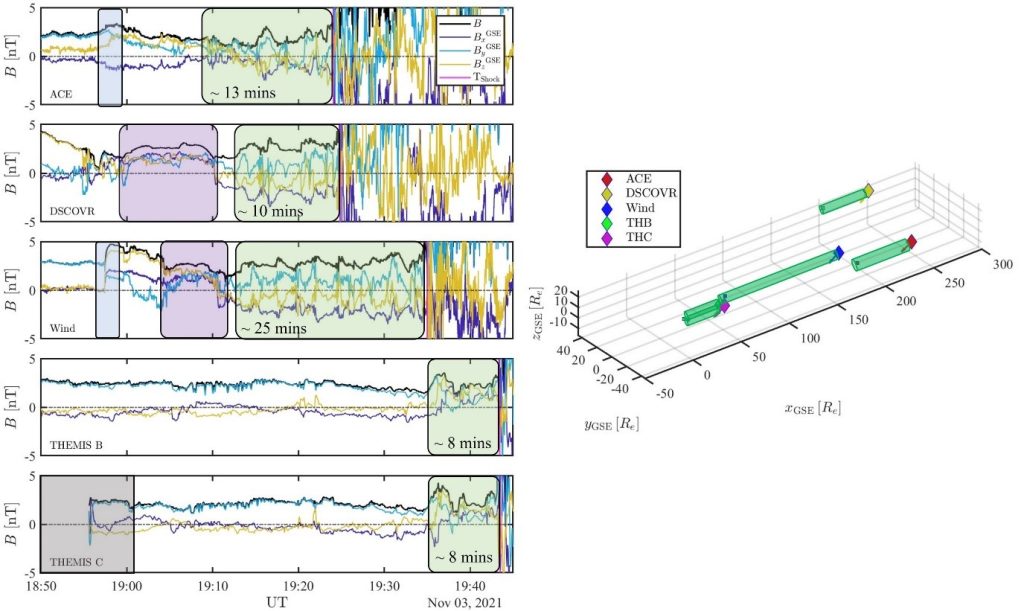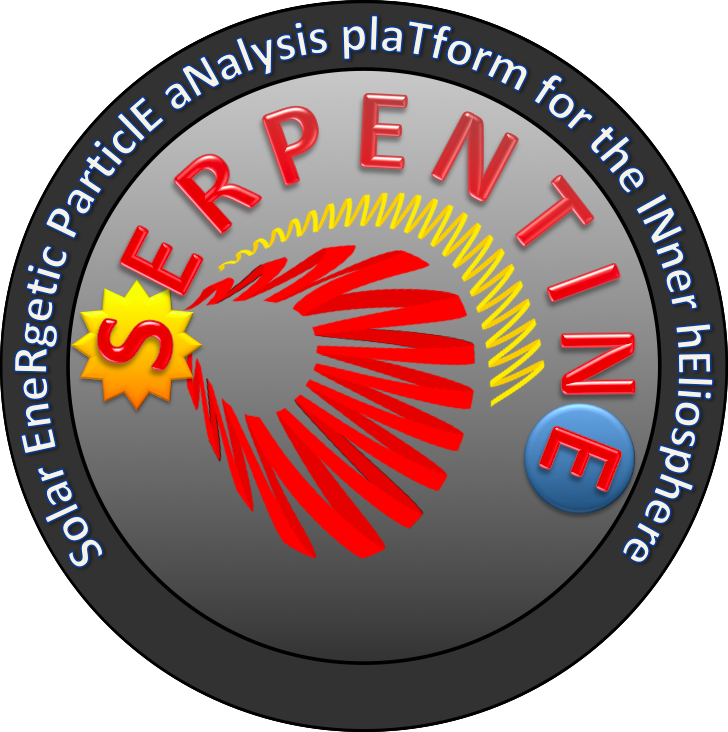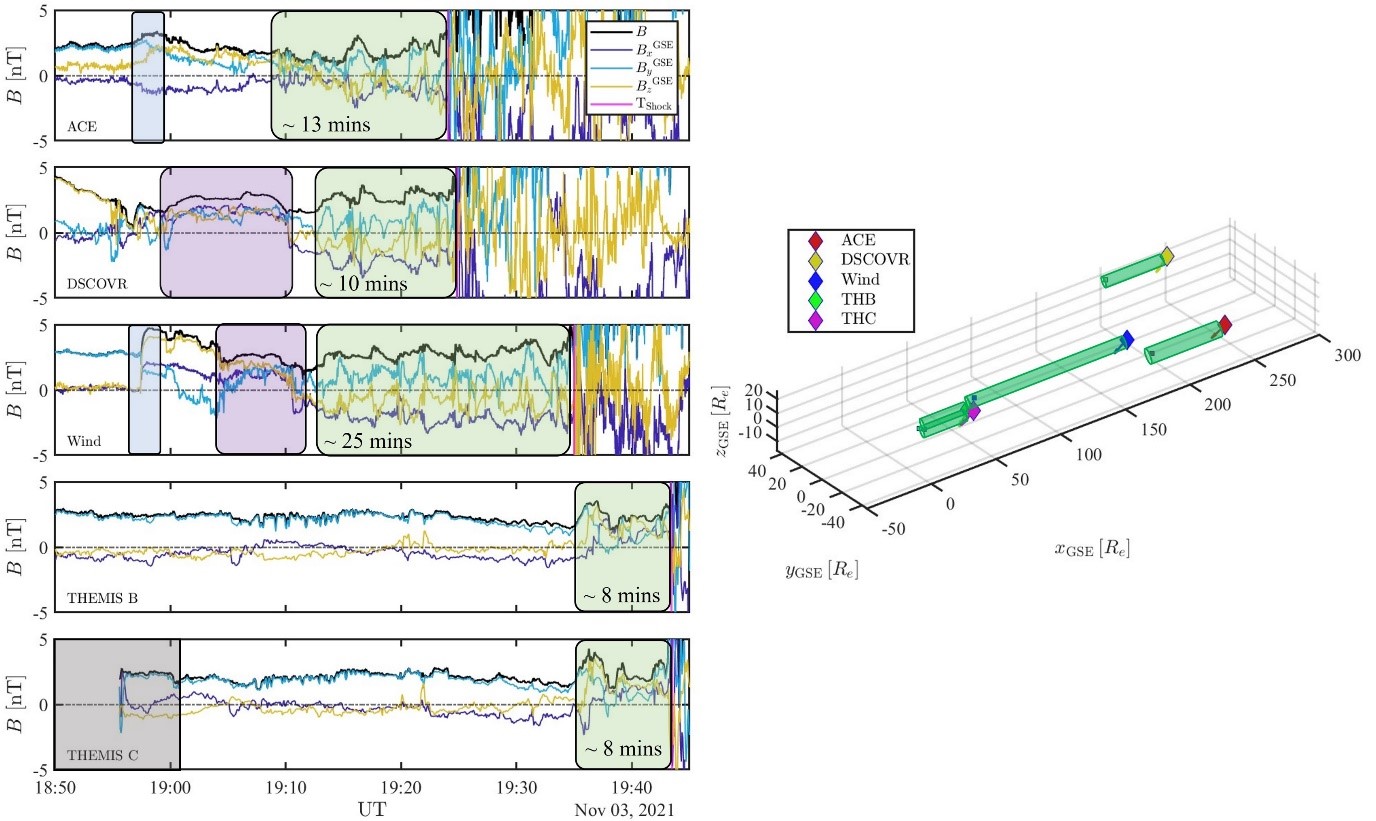Solar eruptions are able to drive shock waves in the heliosphere. We call these shock waves Interplanetary (IP) shocks. IP shocks are ubiquitous in the heliosphere, and the possibility to observe them in-situ is crucial to address important aspects of energy conversion for a variety of astrophysical systems, a theme common to many SERPENTINE objectives and efforts. Observations of IP shocks and their environments in the present solar cycle, carried out with novel missions and in a range of distances from the Sun never probed before, may be crucial for a deeper understanding of IP shocks, with important consequences for our knowledge of shocks in general, thus providing the missing link to remote astrophysical environments.
SERPENTINE consortium has recently been involved in novel observations of so-called shocklets at IP shocks. Shocklets are steepened (or sawtooth-like) plasma waves looking like “baby shocks” and they are routinely observed upstream of the Earth’s bow shock, where they play a fundamental role in pre-conditioning the plasma before it reaches the shock wave. However, shocklets at IP shocks have been very elusive, with only two cases ever reported, one in 1997 and another in 2009, raising questions about how universally they can be found at shocks in general. Figure 1 presents the observations made with a spacecraft fleet in the solar wind upstream of the Earth in November 2021.

The observations clearly show a third case of an IP shock having upstream populated with shocklets and, for the first time, such shocklets were observed simultaneously by multiple-spacecraft. Indeed, an unusually strong IP shock observed on 3 November 2021 crossed several spacecraft in near-Earth solar wind, with precursor shocklets identified. The same shock was detected also by radially aligned Solar Orbiter at 0.8 Earth’s distance from the Sun, but no shocklets were identified from its data. This introduces the possibility to study the environment in which shocklets developed ahead of the IP shock.
In our study, the Wind spacecraft has been used to characterize the shocklets, associated with pre-conditioning of the shock upstream by decelerating incoming plasma in the shock normal direction, in a similar fashion to what has been discussed for the Earth’s bow shock. Using the Wind observations together with ACE, DSCOVR, THEMIS B and THEMIS C spacecraft in the near-Earth solar wind, the portion of interplanetary space filled with shocklets is addressed, and a lower limit for its extent is estimated to be of about 700,000 km in the direction of shock propagation and 160,000 km in the directions transverse to it. This shocklet field is much larger than the one upstream of the Earth’s bow shock. The consortium is now working to link the presence of such shocklets to the observed behaviour of energetic particles upstream of IP shock waves.
For further details, see:
D Trotta, H Hietala, T Horbury, N Dresing, R Vainio, L Wilson, III, I Plotnikov, E Kilpua, Multi-spacecraft observations of shocklets at an interplanetary shock, Monthly Notices of the Royal Astronomical Society, Volume 520, Issue 1, March 2023, Pages 437–445, https://doi.org/10.1093/mnras/stad104

